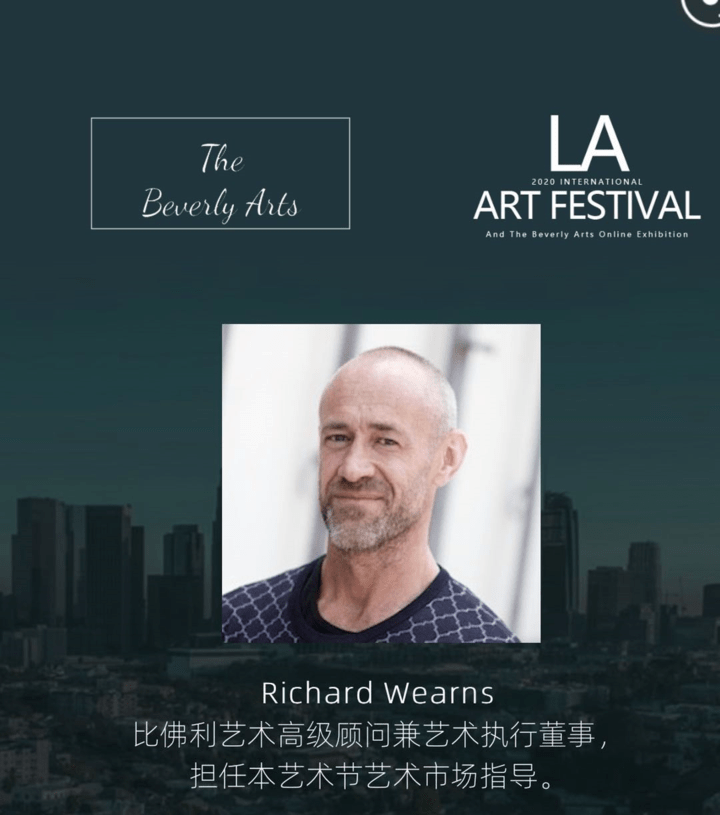
近日,美國加州大學(xué)洛杉磯分校藝術(shù)學(xué)院終身教授、世界著名重量級(jí)權(quán)威藝術(shù)評(píng)論家、美術(shù)家理查·韋恩(Richard Wearn)撰寫了一篇題為《黃建南—視覺語言藝術(shù)與表現(xiàn)藝術(shù)大師》的評(píng)論文章,在剖析黃建南這位享譽(yù)世界的中國書畫藝術(shù)家的創(chuàng)作手法、藝術(shù)風(fēng)格的同時(shí),還對(duì)其書畫作品、藝術(shù)成就等大加贊賞,隨后在美國比佛利藝術(shù)新聞網(wǎng)(如下截圖)發(fā)表,引發(fā)了強(qiáng)烈的反響。
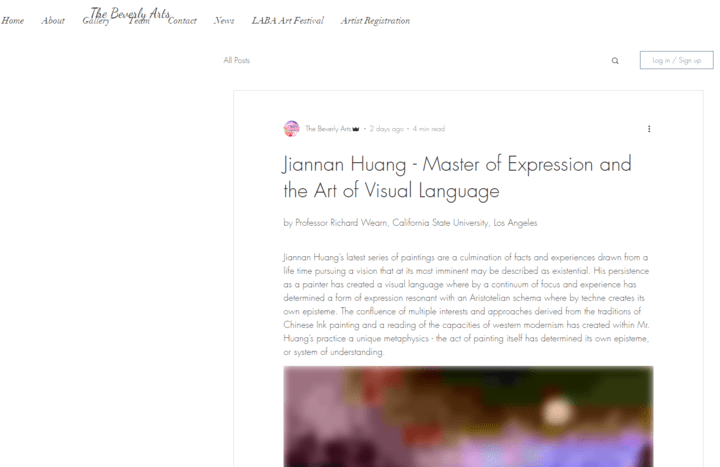
理查·韋恩是比佛利藝術(shù)高級(jí)顧問兼藝術(shù)執(zhí)行董事,同時(shí)擔(dān)任洛杉磯國際藝術(shù)節(jié)藝術(shù)市場指導(dǎo)、共同主席兼藝委會(huì)評(píng)委。美國加州大學(xué)洛杉磯分校藝術(shù)學(xué)院位列世界三甲。美國加州大學(xué)洛杉磯分校是一所公立大學(xué),是美國商業(yè)金融、高科技產(chǎn)業(yè)、電影藝術(shù)等專業(yè)人才的搖籃,是美國最頂尖的綜合大學(xué)之一,提供337個(gè)不同學(xué)科的學(xué)位,是全美培養(yǎng)尖端人才領(lǐng)域最廣的大學(xué)。
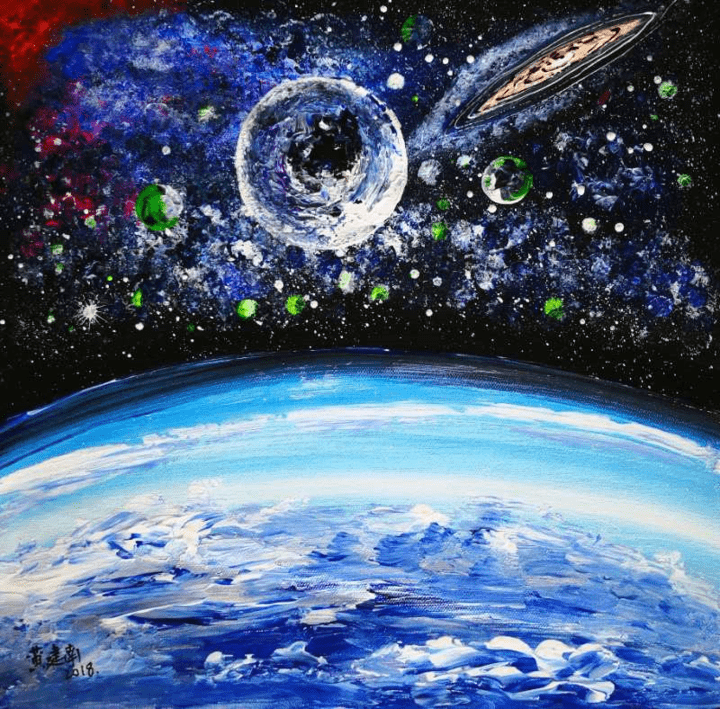
以下為《黃建南—視覺語言藝術(shù)與表現(xiàn)藝術(shù)大師》全文(中英文對(duì)照):
Jiannan Huang
October 19th, 2020
Richard Wearn
Jiannan Huang’s latest series of paintings are a culmination of facts and experiences drawn from a life time pursuing a vision that at its most imminent may be described as existential. His persistence as a painter has created a visual language where by acontinuum of focus and experience has determined a form of expression resonant with an Aristotelian schema where by techne creates its own episteme. The confluence of multiple interests and approaches derived from the traditions of Chinese Ink painting and a reading of the capacities of western modernism has created within Mr. Huang’s practice a unique metaphysics - the act of painting itself has determined its own episteme, or system of understanding.
黃建南最新出版的繪畫作品集是他一生藝術(shù)追求的結(jié)晶,他試圖展現(xiàn)藝術(shù)方面新的視覺。 作為畫家的他執(zhí)著地摸索出了一種視覺語言,通過不斷的追求和探索,他探尋出了一種與亞里斯多德式圖式產(chǎn)生共鳴的表達(dá)形式,而泰恩則通過這種方式與之產(chǎn)生共鳴。 在黃先生的實(shí)踐中,源于中國水墨傳統(tǒng)的多種興趣和方法的融合以及對(duì)西方現(xiàn)代主義能力的理解,創(chuàng)造了一種獨(dú)特的形而上學(xué)的屬于自我的藝術(shù)體系。

This analysis of Jiannan Huang’s work is best understood through the active critical history that propels China’s rich and immense cultural life. An ongoing questioning of the primacy of the "Ink Art" tradition has dominated the artistic discourse in China throughout the twentieth century. Chinese Ink Art is the oldest co-herent tradition of image making on the planet, having maintained an active, self-referencing epistemology initiated around 400AD. The strictures and conditions of this traditionhave been increasingly challenged by the appearance of new media and artistic practices introduced from the West. The inevitability of Western influence lead to, on the one hand, a cultural protectionism, and on the other a more formal and regulated acceptance of the western modernist tradition.Reflected in the curricula of the Chinese Art Academies, whereGuohua (Chinese-style painting), and Xihua (Western- style painting) form, to this day, segregated and distinctive approaches to the instruction of visual art. Chinese Art Academies have placed Guohua and Xihua into separate departments with distinctive curricula. These separate streams of artistic context also dominate the professional field. Noteworthy, yet not directly applicable to Jiannan Huang’s practice, is the rise of a third “Globalized” or “Post Modern” Art, that emerged in the 1980s that can no longer be categorized by either of these two terms. At times Chinese artists have identified this as "experimental ink painting” or Shiyan Shuimo a modernizationof Chinese Art through the appropriation of western models whilst employing the use of traditional painting instruments and materials such as brush, ink, and paper. Others, still identifying themselves as Shiyan Shuimo utilize new media, and strategiessuch as appropriation and institutional critique within their specific forms of practice.
對(duì)于黃建南作品的理解,可以通過對(duì)中國豐富文化歷史的了解得到最好的印證。在整個(gè)二十世紀(jì),對(duì)“水墨藝術(shù)”傳統(tǒng)的至高無上的探尋一直主導(dǎo)著中國的藝術(shù)話語。中國水墨藝術(shù)是地球上最古老的文化傳統(tǒng),在公元400年左右就一直保持著活躍的,自我參照的認(rèn)識(shí)論。從西方引進(jìn)的新媒體和藝術(shù)實(shí)踐的出現(xiàn),使這一傳統(tǒng)的局限性和條件日益受到挑戰(zhàn)。受西方影響,一方面導(dǎo)致了文化保護(hù)主義,另一方面又導(dǎo)致了對(duì)西方現(xiàn)代主義傳統(tǒng)的更加正式和規(guī)范的接受。迄今為止,在中國美術(shù)學(xué)院的課程中都體現(xiàn)了國畫和西畫的相互融合,它們?cè)谝曈X藝術(shù)教學(xué)中采用了截然不同的方法。中國美術(shù)學(xué)院將國畫和西畫分為不同的課程,各有特色。這些獨(dú)立的藝術(shù)語境也影響著專業(yè)領(lǐng)域。值得注意的是,第三種“全球化”或“后現(xiàn)代”藝術(shù)的興起,從某種層面影響著黃建南藝術(shù)的創(chuàng)作。有時(shí),中國藝術(shù)家將其稱為“實(shí)驗(yàn)水墨畫”,這是受西方繪畫的影響,同時(shí)使用傳統(tǒng)繪畫工具和材料(例如畫筆,墨水和紙張)來實(shí)現(xiàn)的中國藝術(shù)的現(xiàn)代化。

Sound scholarship responsive to art considers the ongoingcultural and historic processes that determine our subjectivities, particularly as cultural dialogues embrace post-colonial narratives. As Jacques Derrida emphasized, there is ‘no greater indignity than the reading of one culture by another.’
學(xué)術(shù)研究是一個(gè)非常持續(xù)的過程,尤其是當(dāng)東西文化產(chǎn)生碰撞的時(shí)候。 正如雅克·德里達(dá)(Jacques Derrida)所強(qiáng)調(diào)的那樣,“文化之間相互的碰撞是一個(gè)延續(xù)的過程。”
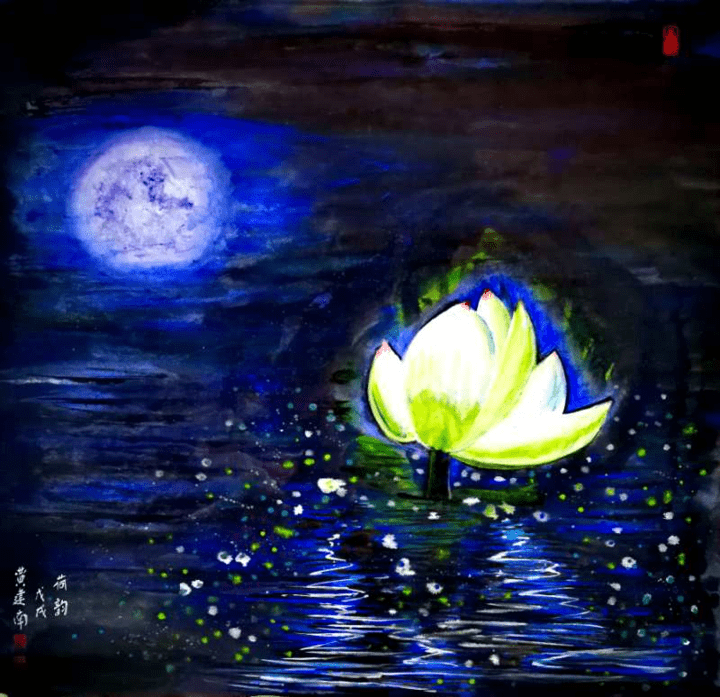
What compels me to respond to Mr. Huang’s painting practice is the expansion of preoccupations of both Guohua and Xihuasimultaneously, that has given rise to a new visual language that may be read as both intrinsic to the craft of painting in both instances, and also extrinsic to those definitions by way of its allusionistic and semiotic conditions. My address is pertinent to Mr. Huang’s iterations of pictorial space, that are both western modernist in intent, traditional in terms of Guohua, and indeed allusionistic and literal in reference.
Mr. Jiannan Huang has arrived at the confluence of these approaches, processing them into his distinctive painting practice which is removed from the institutional orthodoxies of studio arts education. He is a self-taught artist, his paintings are grounded in a vision that was informed equally by his personal and self- guided scholarship, and his witnessing of the seismic historic, social and political alterations that China has undergone in his life time.
我對(duì)黃先生繪畫語言的理解,他使用了一種新的視覺語言。在東西文化的輝映中,這種視覺語言有其獨(dú)物的藝術(shù)探索思維。我的講話與黃先生的繪畫思路的方向有關(guān),既有西方繪畫的感覺,又繼承了傳統(tǒng)國畫的精髓。
黃建南先生已經(jīng)達(dá)到了這些方法的融合,并將它們處理成他獨(dú)特的繪畫實(shí)踐。他是一位自學(xué)成才的藝術(shù)家,他的繪畫基于他的個(gè)人不懈的努力,他見證和經(jīng)歷了中國很多時(shí)期的發(fā)展,這在他的藝術(shù)上有所體現(xiàn)。
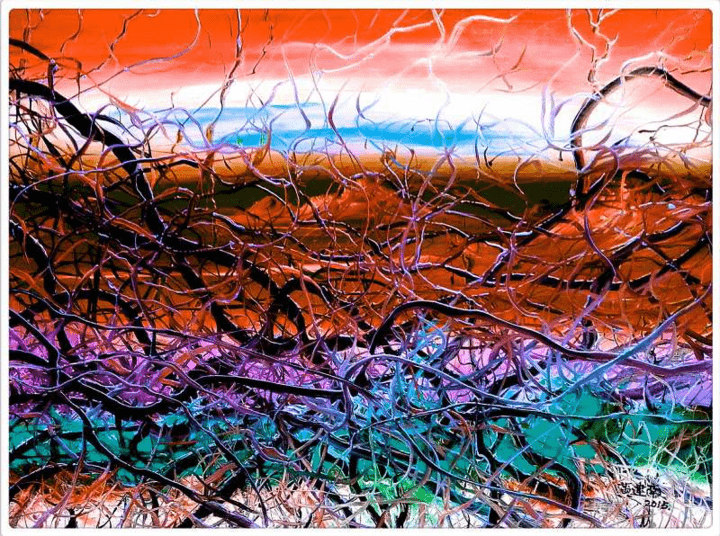
Western artists who did not undergo a formal training are designated as “outsider”. I have often thought this term to be oppressive and designed to re-enforce a cultural and economic hierarchy that has evolved from the exclusionary processes of Modernism. In my view this terminology becomes accurate when it is inverted. An “Insider” Artist is one that is motivated by the seeking of a deeper authenticity of experience and its rendering into form. A rejection of institutionalized orthodoxies, replaced by the embrace of the sensory pleasure of existence. The existential phenomenology that underwrites Mr. Huang’s practice is easily traceable - he walked. He spent a large part of his life trekking across China, his journey through out its vastness was the creation of a life narrative grounded in the sensory. A daily practice of living enlivened his senses, and his meditative bandwidth.
有一種說法是西方藝術(shù)家是游離于藝術(shù)之外,我認(rèn)為是牽強(qiáng)附會(huì)的。我認(rèn)為,成熟的有鮮明風(fēng)格的藝術(shù)家尋求更深的體驗(yàn)真實(shí)性并將其轉(zhuǎn)化為形式。從傳統(tǒng)中來,又不拘泥于傳統(tǒng),取而代之的是對(duì)藝術(shù)形式的不斷創(chuàng)新。黃建南一路走來,他一生的大部分時(shí)間都在中國各地跋涉,游歷,他在整個(gè)中國的旅程是走一路畫一路。每天的生活實(shí)踐開闊了他的視野。
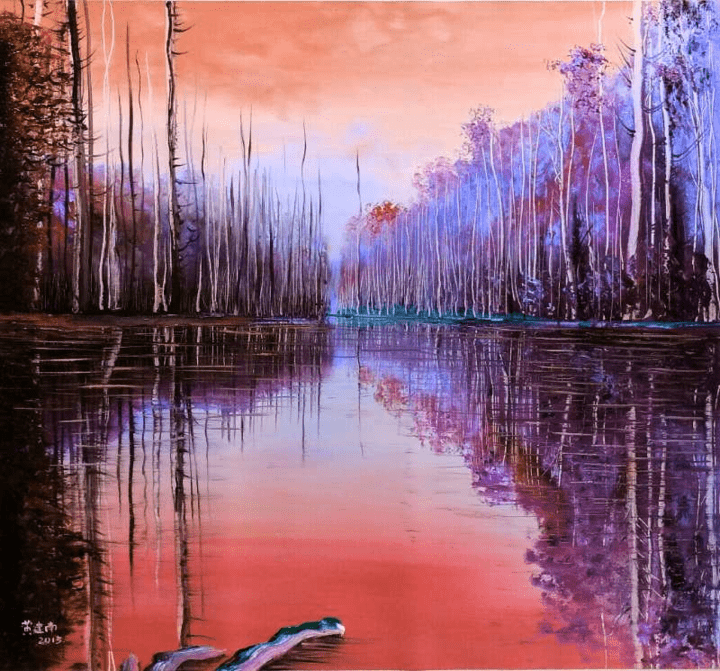
Jiannan Huang’s paintings arise from the practice of life. When we survey them, a notion such as “expression” confuses the capacity of the work to induce empathy. Often we think of expression as an end game, a definitive and readable statement of inner feeling. Through paint Mr. Huang, relaxes this preponderance and offers an insight of what it is to bring the ineffable to expression, as opposed to expressing a particular something.
黃健南的繪畫源于生活實(shí)踐。當(dāng)我們研究他的作品之時(shí),我們驚異于他對(duì)于中西方文化的融匯貫通。通常,我們認(rèn)為表達(dá)是一種終極手段,是對(duì)內(nèi)在感覺的明確表述。通過繪畫,黃先生輕松把所見所感訴諸于筆端,這豐富了他對(duì)藝術(shù)的表達(dá),他對(duì)藝術(shù)不拘一格的理解。

Underwriting these attributes of Jiannan Huang’s work are a set of painterly innovations that coexist, vibrating on the same field. The picture plane to Huang is a vast expansion through which we pass. Our senses are reminded of the levity and possibility of zero gravity, as the image field floats and undulates. Thevibration in Mr. Huang’s work is connected to surface, the tactility of the paint and how its dynamic handling registers an authentic and spontaneous energy. It is the autographic directness, that coalesces to a form. Paradoxically, this non – objective process of painting also successfully delivers imagery. The accumulations of Jiannan Huang’s memories and his phenomena based knowledge is substantiated not in a directly referential co-ordination but are enmeshed in various processes of formal becoming. Cosmological in feel, Mr. Huang’s paintings evoke the universe and its multi-dimensional limitlessness. At all times the spatial relationship to the picture plane and its allusion is adjusted based on our acknowledgement of the painting’s surface qualities. Jiannan Huang brings to expression a sublime and shimmering edge of the infinite.
黃建南作品的這些特征的承托力是在同一個(gè)領(lǐng)域中共存的一系列繪畫創(chuàng)新。通往黃的作品,我們讀到了一種巨大的藝術(shù)擴(kuò)展能力。 黃先生油畫作品中所體現(xiàn)出來的質(zhì)感,似乎有一種自發(fā)的能量感人至深。黃建南的藝術(shù)感覺源于他豐富的知識(shí)積累,他的作品體現(xiàn)出多樣化的藝術(shù)形式。黃先生的繪畫具有宇宙學(xué)意義,喚起了宇宙及其多維無限性。在任何時(shí)候,我們都能從他的畫作中體會(huì)出他對(duì)于獨(dú)特空間關(guān)系的處理。黃建南將無限的很微妙的意境融于一爐,表達(dá)出很深的藝術(shù)境界。

藝術(shù)大師黃建南
黃建南,號(hào)“妙建”,國家一級(jí)美術(shù)師,擅長油畫、國畫,“全球公益聯(lián)盟金質(zhì)勛章”獲得者,榮獲印度尼西亞皇室“伯爵”爵位。黃建南自2015年以來連續(xù)在胡潤研究院《胡潤藝術(shù)榜》排名前十位,并在《2019胡潤藝術(shù)榜》取得第四位、《2020胡潤中國藝術(shù)榜》第三位的好成績,是中國目前唯一一個(gè)在油畫和國畫兩個(gè)領(lǐng)域同時(shí)排名前十位的畫家,在歐美藝術(shù)權(quán)威網(wǎng)站artprice的全球當(dāng)代藝術(shù)家500強(qiáng)中排名第二十一位。

▲黃建南作品鑒賞
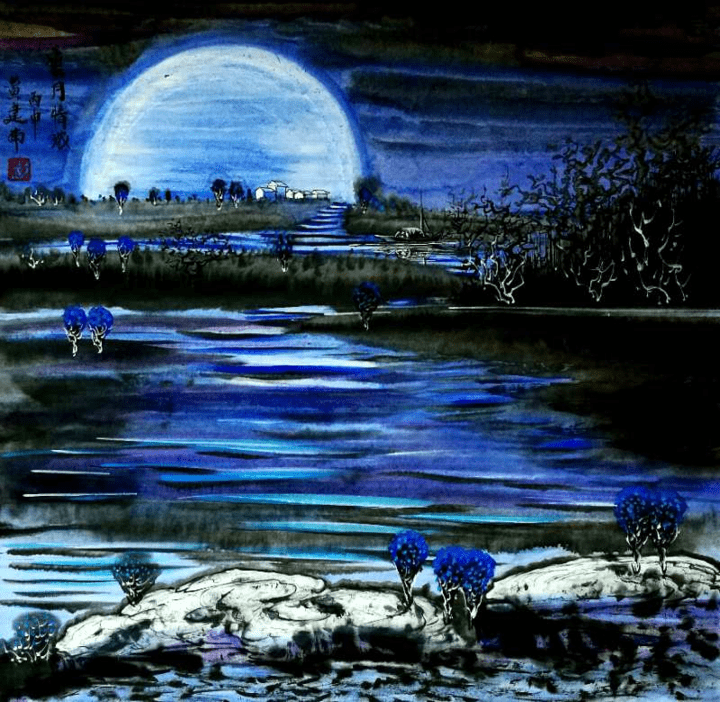
▲黃建南作品鑒賞
黃建南先后榮獲“2019年全國公益慈善十大影響力人物”“2020年全國學(xué)雷鋒先進(jìn)人物”,連續(xù)兩期被聘為清華大學(xué)深圳研究生院兼職研究員,是 中國傳統(tǒng)文化促進(jìn)會(huì)理事、 “為奧運(yùn)喝彩”組委會(huì)海外藝術(shù)總顧問、法國國立藝術(shù)家委員會(huì)會(huì)員、世界低碳城市聯(lián)盟藝術(shù)顧問、法國吉尼市金質(zhì)勛章榮譽(yù)市民。

▲黃建南作品鑒賞

▲黃建南作品鑒賞
黃建南早期歷時(shí)九年步行三萬八千多公里,走遍大江南北、深入大漠鄉(xiāng)村城鎮(zhèn)體驗(yàn)生活、寫生創(chuàng)作,積累了大量的素材及經(jīng)驗(yàn)。2017年,黃建南與法國歷史悠久的ROSSINI拍賣行簽約,隨著國畫和油畫作品的多次拍賣成功,標(biāo)志著黃建南作品正式進(jìn)入歐美主流拍賣市場,成為目前中國極少數(shù)能成功進(jìn)入歐洲主流拍賣市場的藝術(shù)家之一。
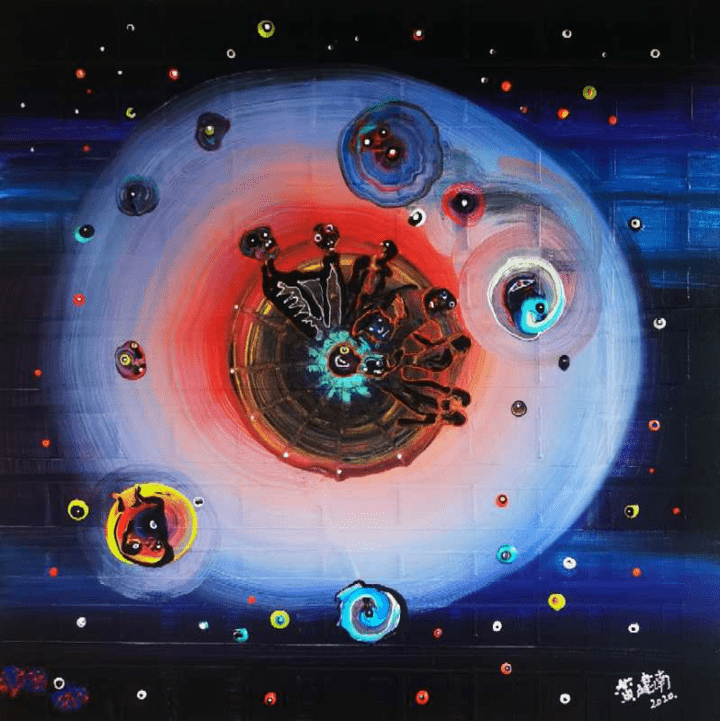
▲黃建南作品鑒賞

▲黃建南作品鑒賞